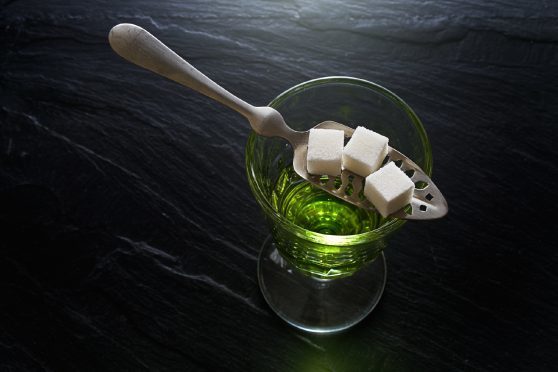We know that alcohol and homo sapiens have been best buddies for thousands of years. However, it is still much debated: Is it the greatest social drug ever discovered? Or the bane of mankind?
Sometimes the second view has prevailed, leading nations to impose partial or blanket prohibition, the latter invariably a formula for disaster. Yet one alcoholic drink was banned throughout Europe and the US for some 75 years. That was absinthe (pronounced abb-sant), outlawed in 1915, yet quietly revived since 1990 and now available in many UK supermarkets and off-licences.
So what’s unique about it and why was it banned? It’s a strong, bitter spirit (usually 60% abv or more), flavoured with grand wormwood, green anise, sweet fennel and other aromatics. First distilled near Neuchatel in Switzerland around 1790, it swept through France and became the “in” drink among Parisian artists, writers and intellectuals in the late 19th Century and early 20th.
Big-name absinthe tipplers included some Impressionists, Oscar Wilde, Hemingway and Picasso. It contained thujone, a chemical in grand wormwood with a (rather exaggerated) repute as a hallucinogen. That repute, plus the supposedly louche clientele that drank it, plus first world war strictures, led France to ban it in 1915, with other countries following suit. Only in 1990, thanks to new EU-wide trade rules, has aAbsinthe revived.
Ironically, grand wormwood (artemisia absinthium) has been used and cherished for its medicinal qualities and aromatic oil for nigh on 4000 years. It’s a herbaceous perennial, almost a small shrub, with yellow flowers. Potions derived from it were used in ancient Mesopotamia, Greece and Rome to alleviate anything from indigestion to period pains. In the Middle Ages, it was used as an effective treatment against tapeworm and (much later) thought to match quinine in fighting malaria.
Because of their bitter flavour, some absinthes contained sugar syrup, but most were unsweetened. However, in its heydays, Parisian cafes often served it with a sugar lump on an ornate perforated spoon and a tiny carafe of water. One dripped water onto the sugar lump until it oozed through the spoon into the absinthe.
Interestingly, genuine antique absinthe spoons, especially silver ones, now fetch big money at auction. Did I hear someone say absinthe makes the heart grow fonder?










